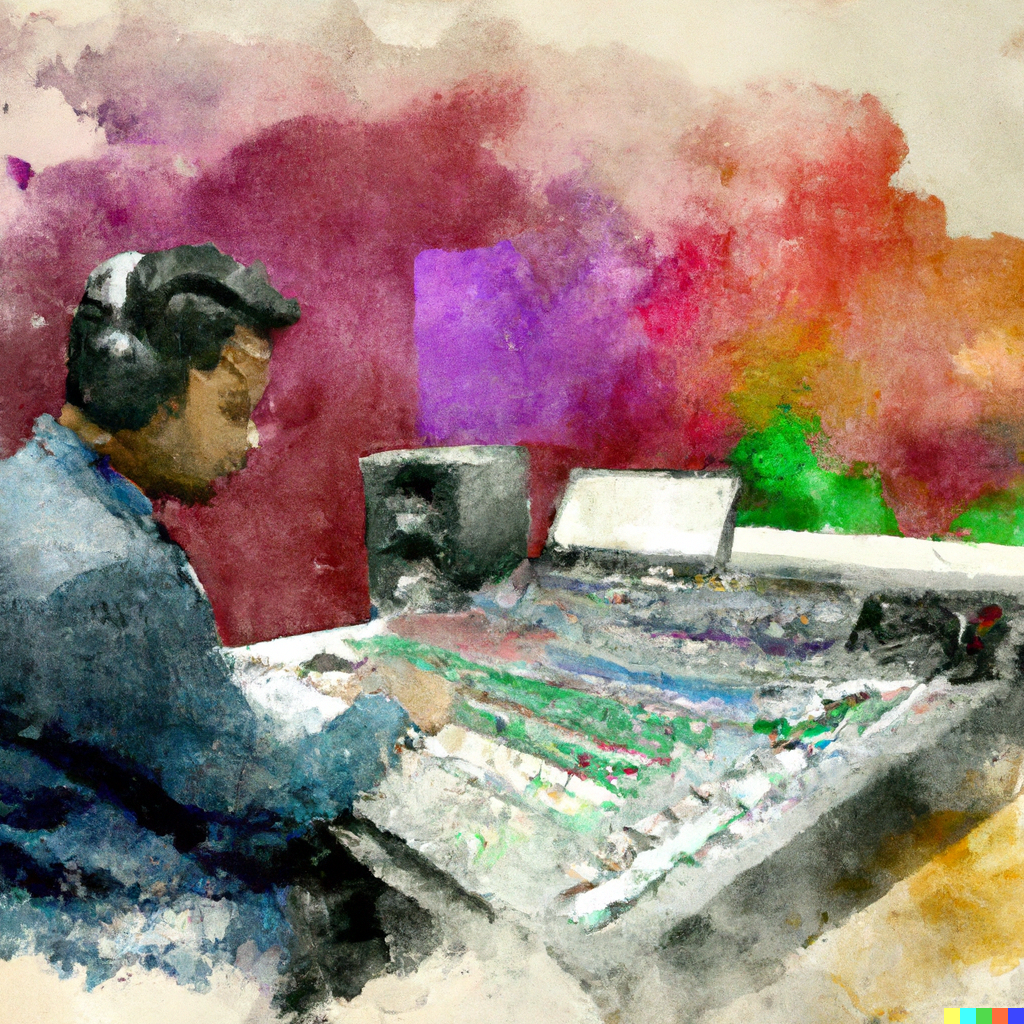
Congratulations! You’ve finished recording your song and it’s ready to be mixed on its way to the masses. Below are some tips to help ensure a smooth transition from the recording stage to the mixing one. Preparation not only increases the quality of the mix but it also saves time and hassle in the mixing process. In this article, we will provide you with essential tips to help you prepare your song for the mixing stage effectively.
I know this may seem like a lot of information, feel free to bookmark it to refer to later and don’t worry about getting through it all in one read.
In addition to the general tips below, I will be linking to DAW specific pages on exporting your files to hopefully handle any questions that may come up. If you have any questions that aren’t covered here get in touch and we’ll be happy to help.
1. Review the Timing and Performance:
Listen to your recorded tracks carefully and verify all adjustments to the timing or performance have been completed. Use editing tools to align any out-of-sync elements or tighten up the timing of individual instruments or vocals as needed. If you’ve tuned vocals make sure the tuning process is printed as a separate Audio File clearly labelled (we make a duplicate track with T in the file name to denote this).
2. Clean Up Your Audio:
Ensure that your audio tracks are free from unwanted noises, clicks, pops, and background hums. Make sure all edits (punch ins, vocal comps etc) are crossfaded since this is the largest source of pops and clicks. If comfortable with their use, noise reduction plugins can help to clean up unwanted hum and noise, however if you’re unsure of how to use them, it’s better to leave the noise in since certain settings can create even bigger problems. With guitars or analog synths that have a constant noise, leaving that in through gaps of silence can actually help us with properly de-noising them if needed so don’t worry about cutting out every little bit of space.
In case there are specific noises you want left in (ex. a vocalist’s breath for emotion or a drummers noises) let us know in advance.
3. Commit Effects & Pitch Tuning as needed:
As mentioned above, we do request the untuned vocal tracks to have as a backup in case there are tuning artifacts or issues that weren’t noticed initially.
Please also include dry tracks of anything that has had a time based effect (reverb, delays etc) added as well as an effected track if it is essential to a part in the song. This gives us the option to either recreate the effect perhaps in a different way as well as bypassing it if needed for contrast in a particular section. We always start with the effected version but having the unprocessed can speed up the process by you not needing to print it later on.
Bypass any plugins that you’ve been listening with (Compression, EQ etc) unless you are 100% certain that they are imperative to the sound. Some DAWs offer the ability to render all tracks with processing included and bypassed, in that case feel free to create two folders of the files, one with FX in the title that includes all the processing. As with the vocals, we’ll start with your processing but in many cases a different approach to the EQ is needed and it helps massively to have the unprocessed version.
Also, include DI tracks for guitar and bass guitar if re-amping may be required or requested (they’re handy to have in either case). This can allow us to create additional layers or textures within the mix and open up more creative possibilities.
When exporting files with processing on, please verify that the processing isn’t causing clipping or digital overloads. This process is sometimes reversible but always with a loss of quality.
4. Organize and Consolidate Your Tracks:
This is by far the most important step, it is essential to organize your tracks properly. Label each track clearly and remove any unused or unnecessary tracks from the session. It’s important to use the same names for your tracks in each song of your project. This makes it easier for the mixing engineer to transfer settings between songs for instruments that stay the same. Please use instrument names in addition to people’s names (especially if they’re performing multiple instruments), having Bill 1, Bill 2 and Bill 3 isn’t as helpful when one is a guitar, the second a harmonium and third a vocal.
Labeling your tracks clearly before recording will save you time in not having to rename mislabeled tracks later because most DAW’s will name and catalog your files with respect to your track titles. There are few things more frustrating than seeing a folder full of Audio File 1_123 & Audio File 1242_12. Labelling the files massively helps speed up the mixing process and keeps us focused on making the song sound its best.
– A note on labeling: When titling your tracks and folders please use a Space instead of an Underscore _ there are several scripting shortcuts in our Prep stages that operate quicker with a Space. Thanks!
Consolidate multiple takes or recordings into a single track, however, in cases where there are overlaps (ex. A vocal note that carries over the start of the next line) put those on separate tracks. By organizing and consolidating your tracks, you provide clarity to the mixer, enabling them to focus on achieving the best possible mix. All tracks should start at the same location (0:00 or Bar 1 Beat 1), this ensures that all of the timing edits maintain their correct location.
The files should be rendered at the same Sample Rate & Bit Depth they were recorded at (ex 96 kHz or 44.1 kHz), BWAV (Broadcast Wave) format is preferred but AIFF also works. Please ensure that the files are not exported as .mp3, this is a lossy format that will guarantee a decrease in quality.
5. Generate a Tempo Map:
Only needed if your song has Meter or Tempo changes throughout but it doesn’t hurt to have in any case. Different DAWs handle this differently but the process usually involves exporting a MIDI file. This step ensures that tempo synced effects like delay work properly and if any parts end up being added or sections need to be removed (ex. For radio edits) it will simplify that process. If there are key changes denoting these with markers is also helpful.
6. Exporting your files for mixing
We mix in Pro Tools and prefer to receive projects in that format (here’s some info on exporting a PT Session) but can work with projects from any DAW. If you’re working in another DAW check the guides below for the Exporting steps and then ensure that all the Audio Files are exported to a folder titled with the Song Name, Tempo (if there are no changes) and Key. Ex: “The First Song” 113bpm Dmin. Ideally, import the tracks into a new session before uploading to verify that all the parts are present. It’s a not uncommon occurrence to send out a mix only to hear back that a solo or harmony part is missing. This will cause delays to the process and isn’t fun for anyone.
7. Give us notes in advance:
Letting us know what your goal is with the song is a hugely important step. What are you saying with the music? How do you want it to come across, a bombastic in your face mix has a very different approach from an intimate performance that is supposed to invite the listener in. Information about similar songs or artists that we should check out as a mix reference is helpful. Hearing a Rough Mix of the song as you’ve been listening to it is crucial, feel free to include notes on the things you don’tlike about the current version and specific areas of focus.
8. Decide & discuss what deliverables you will need:
Our standard deliverable versions of a mix include the main version, an instrumental version and an acapella version. If you are intending to perform live alongside elements of the song and need a more granular version (ex. Drums Stem [Stem is the term for multiple similar elements that are mixed to a single stereo track], Bass Stem etc.) there is generally an additional fee for this due to the additional time required but it does vary based on the complexity of the song and number of Stems required so determining your needs and planning for that from the outset is helpful.
Great! Now that we’ve gone over everything in depth, here’s a checklist to verify everything is ready to go.
- Review Timing & Performances
- Ensure audio is clean and there are no clicks from edits
- Commit tuning & desired processing
- Organize & Consolidate your tracks
- Generate a tempo map
- Sent along any needed notes
- Decided on deliverables
- Uploaded!

